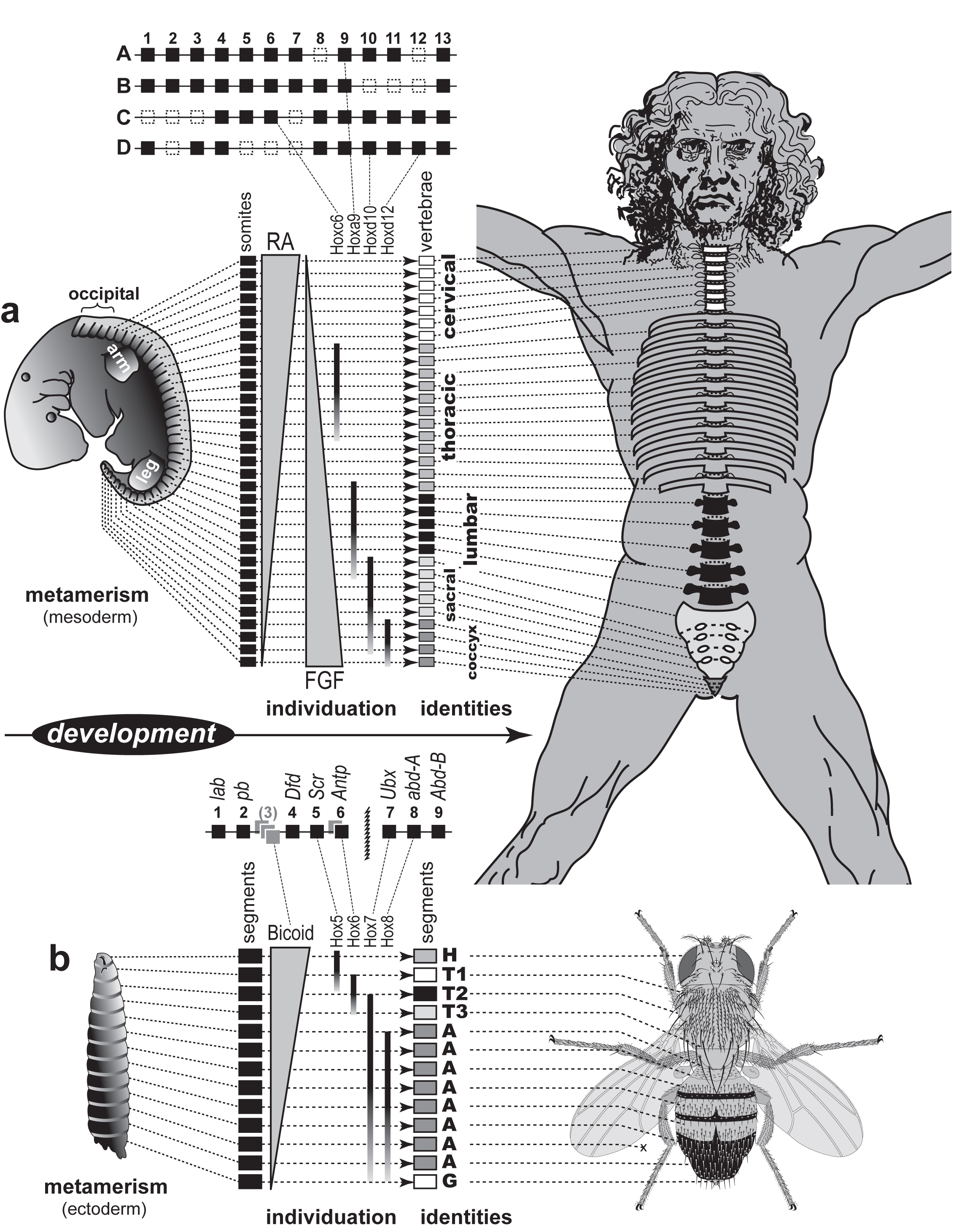

Deep Homology?
  |
Deep Homology? |
 Colinearity of Hox gene expression along the A-P axis. Development is cartooned from left to right in a and b. In both cases Hox genes impose "tagmosis"-regional identities (e.g., thoracic vs. lumbar in humans or thoracic vs. abdominal in flies) in groups of metameres (vertebrae or segments) along the body column. a. Colinearity of Hox transcription in humans. Our four Hox complexes (A-D at top; 3'-to-5' from left to right) evolved via two genome doublings in our fish ancestors. Some paralogs were later lost (dotted outlines) in basal mammals, leaving 39 (out of 52) residual genes in mice and humans. Our 33 vertebrae arise from somites (black rectangles) that acquire regional identities (gray shades for different tagmata) by "individuation" (creation of differences among iterated units) in response to the relative dosages of RA (retinoic acid) and FGF (Fibroblast Growth Factor). b. Colinearity of Hox transcription in flies. The Hox cluster of D. melanogaster is split between genes 6 and 7. Fly orthologs share numbers with human genes but are usually called by names given above. Gray squares along the horizontal array are rogue genes that have adopted non-Hox functions. One of them--the Hox3 paralog bicoid--controls expression of all the other Hox genes. The Bicoid gradient turns ON gap genes (not shown) at different thresholds, and they, in turn, activate Hox genes in the same sequence as their 3'-to-5' order. The "area codes" specified by these (and other) Hox genes dictate the tagmata typical of insects: "head" (H); thorax (T1, T2, and T3); and abdomen (A). |
|
Introduction: cover image Body axes: figure 2 | figure 3 | figure 4 | figure 5 | figure 6 Nervous system: figure 7 | figure 8 Vision: figure 9 | figure 10 | figure 11 | figure 12 | figure 13 Touch and hearing: figure 14 | figure 15 Smell and taste: figure 16 Limbs: figure 17 Epilogue: figure 18 The Interactive Fly resides on the web server of the Society for Developmental Biology. |